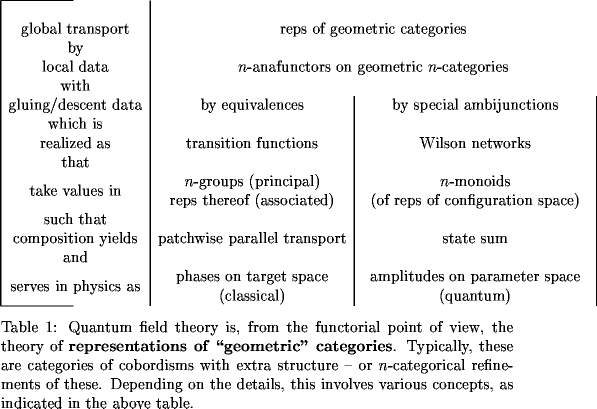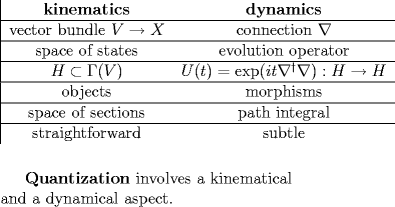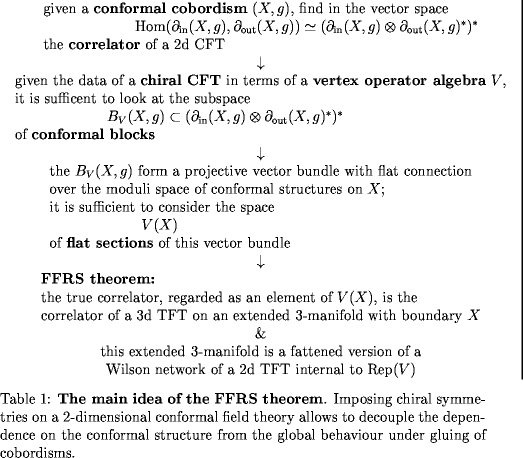Talks at “Higher Categories and their Applications”
Posted by Urs Schreiber
In the context of the workshop Higher Categories and their Applications that takes place at the Fields Institute next January, I am invited to give two talks, one on categorical and 2-categorical aspects of 2-dimensional quantum field theory, the other on higher parallel transport.
In order to harmonize this with other talks being given, I was asked to indicate what I might and might not mention. For those interested, here is some discussion.
A preliminary schedule and some of the abstracts can now be found here.
Parallel Transport in low Dimensions (pdf)
Abstract:
A vector bundle with connection can be conceived as a suitable parallel transport 1-functor from paths in base space to vector spaces.
We categorify this and discuss various examples of locally trivializable 2-transport, some of them relevant for the description of charged 2-particles in formal high energy physics.
We point out how certain kinds of surface transport really have to be conceived as 3-transport; and we discuss the Chern-Simons 3-transport.
On 2-dimensional QFT: from Arrows to Disks.
Abstract:
The quantization of the charged point particle relates two 1-functors into vector spaces: the parallel transport on target space is turned by quantization into propagation on parameter space.
We categorify this and discuss how the 2-dimensional quantum field theory describing the charged 2-particle relates two 2-functors with values in 2-vector spaces.
Our goal is to explain and illuminate this way aspects of the categorical description of rational conformal field theory by the FRS theorem; like the relation of boundary fields (living on “D-branes”) to internal modules and of bulk fields to internal bimodules.
Here is a gentle introduction to the idea of how the space of states of strings are sections of 2-bundles:
Quantum 2-States: Sections of 2-vector bundles
More information is assembled here:
On 2-dimensional QFT: from Arrows to Disks
The theme underlying all this is the desire to understand parallel transport and propagation in quantum field theory on the same footing. The unifying concept is apparently that of transport -functors, as indicated in the following table:

The quantization step from the left to the right column of this table therefore amounts to a procedure that sends parallel transport -functors to propagation -functors.




Parallel Transport in Low Dimensions
I am working on a script for the talk on parallel transport. I am not satisfied with the result yet, but here are some tentative notes: